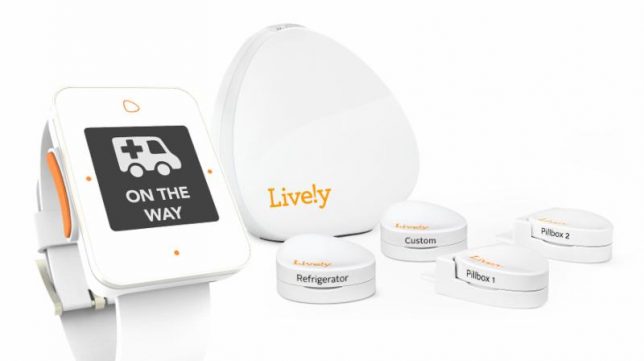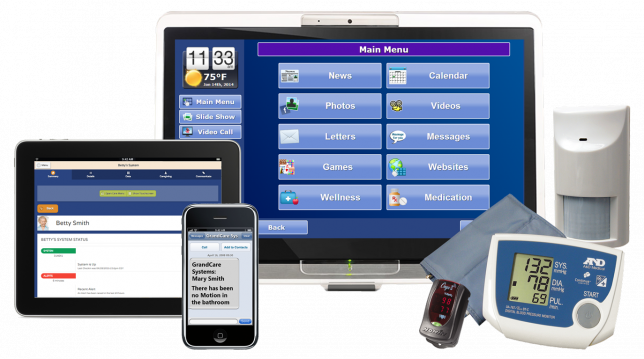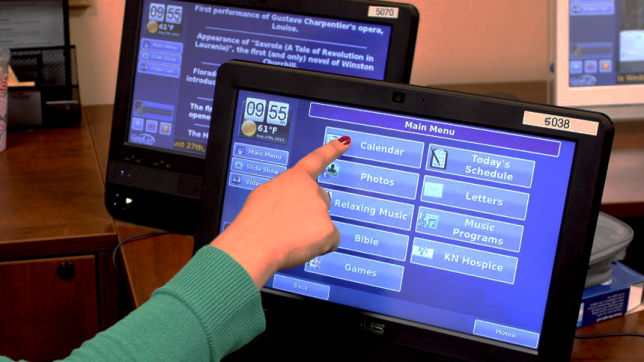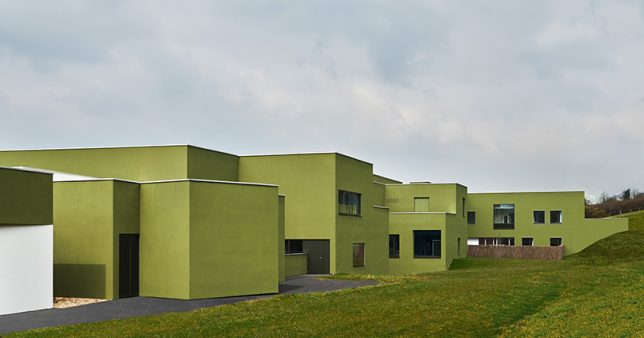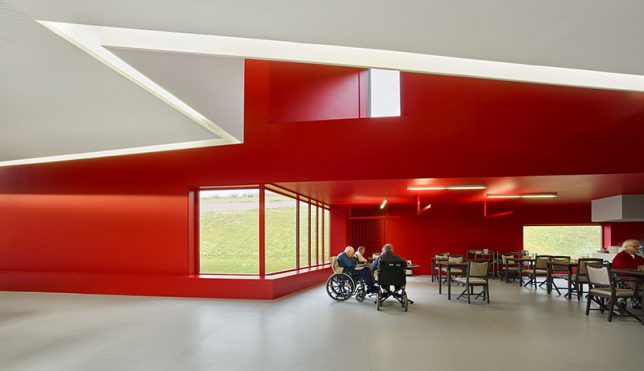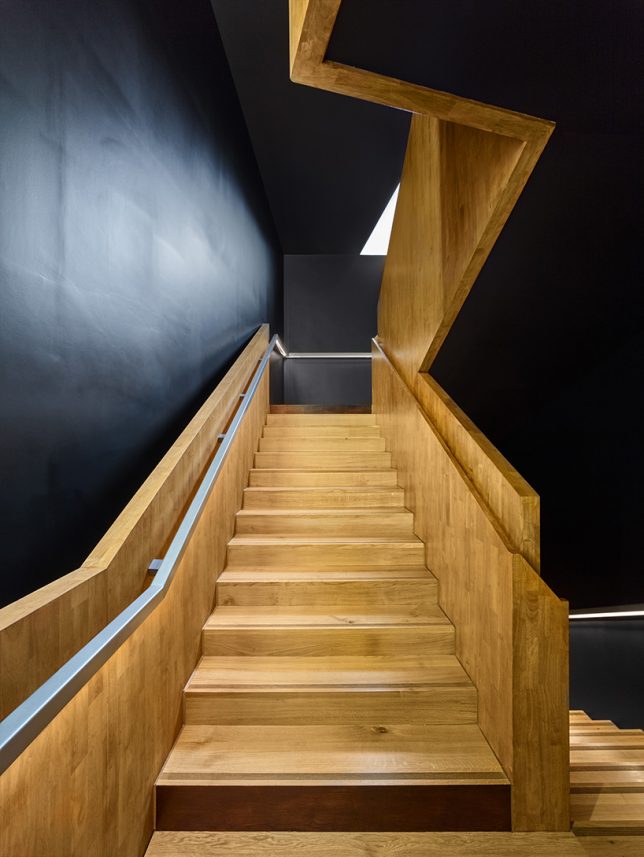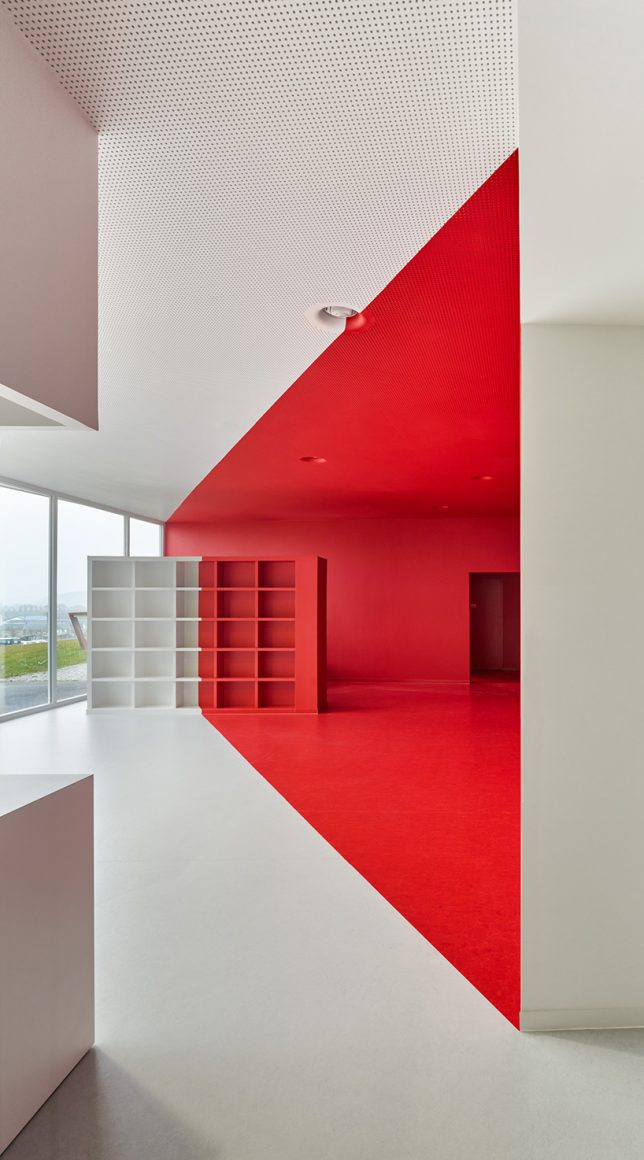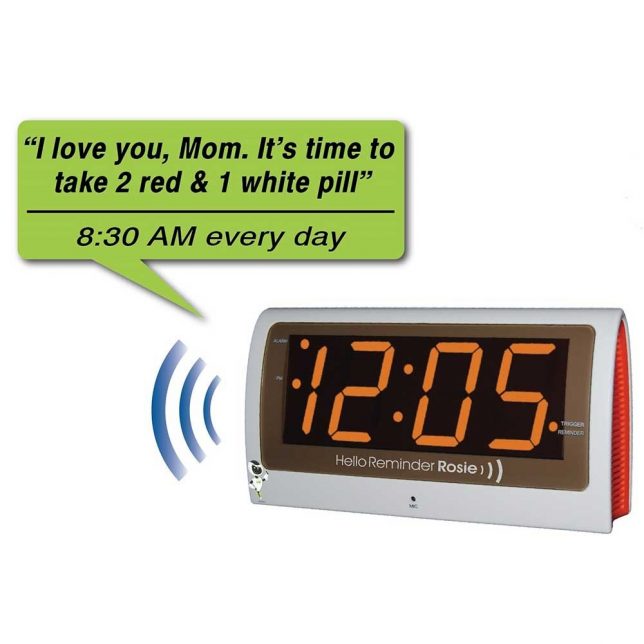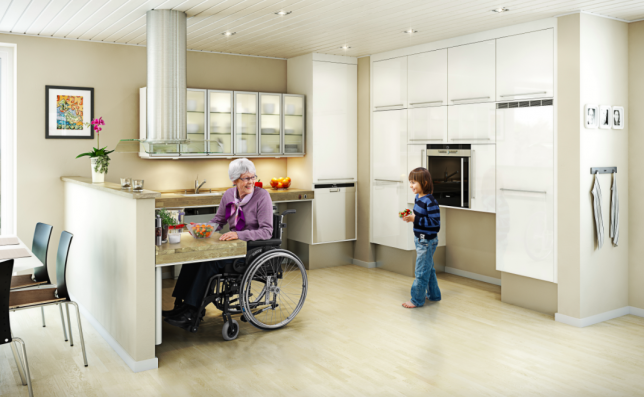GreatCall’s Lively Home: Monitoring from Afar
Another service allowing seniors to live independently in a safe, connected way is GreatCall’s ‘Lively Home’ and ‘Lively Mobile’ services, where technology is either built into their homes or into mobile PERS devices to detect falls, changes in behavior patterns and other emergencies while also monitoring sleeping, health conditions and GPS location. Services like these can reduce the need for transfers to nursing homes and reduce the cost of care.
Family Health Network: Touch-Screen Communication
Even with close monitoring in a familiar home environment, ‘aging in place’ and other approaches designed to feel like less of a harsh transition, getting old can be lonely. ‘Connected for Life’ by the Family Health Network is a mobile patient engagement platform featuring oversized touch screens so users can actively manage their own care, connect with their doctors between in-person visits, and communicate with their families and friends.
Modern Retirement Home in Quebec by Dominique Coulon
This 115-bed care and retirement home in the French village of Orbec doesn’t look like your average nursing facility. Designed to be as unobtrusive in the landscape as possible, the multi-volume complex by Dominique Coulon Associates features dramatic modern interiors that utilize the color red to break up the space. The result feels more like an expensive modern home than a health care facility, showing what a difference a little attention to aesthetics can make.
Reminder Rosie
Robotic assistants can be useful, but there’s nothing like the voice of someone you love. Reminder Rosie is a personalized, voice-controlled reminder system for older adults that lets family members and other caregivers record messages to be played at certain times so they never forget a task like taking a pill or getting ready for an appointment. The system is designed to promote healthy routines without being disruptive to the lives of caregivers, relieving stress and eliminating the feeling that they’re nagging. Since it can be operated almost entirely by voice, it’s great for seniors who aren’t big on technology or can’t physically push buttons or use touch screens.
Trans-Generational Design: Focus on Accessibility
Transgenerational design is a no-brainer, and frankly, virtually all homes should be built like this. The idea is that the spaces are accessible to anyone, not just able-bodied people of average size. Counters and tabletops are set at a variety of heights, everything is wheelchair-friendly, it’s easy to open doors, drawers and cabinets, built-in seats fit larger people, and so on. That way, our environments don’t assume what we’re capable of, and if our abilities change, we don’t have to move or modify our living spaces heavily. The goal is spaces that aren’t just accessible, but also well-designed.
